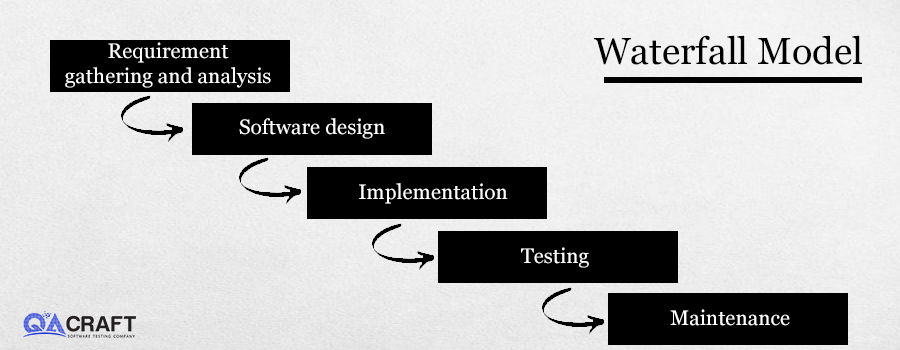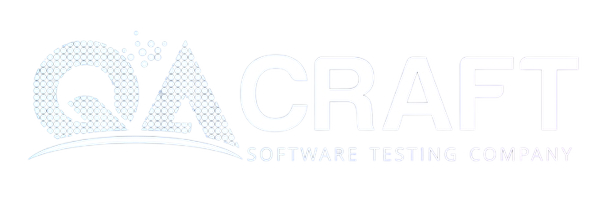Software Testing Models

Software Testing is one of the parts of the software development life cycle. In our current market, there are so many individual models used in the software development process and there is each approach has its own advantages and disadvantages. so, you should select a specific model based on the project requirements and complications of the project. Let’s see different types of software testing models with their benefits and drawbacks.
5 Types of Software Testing Models
Different types of software testing models are as below:
Read the brief about software testing models.
1. Waterfall Model
In “The Waterfall” Model process, the whole process of software development is distributed into separate steps. In this model, generally, the result of one phase works as the input for the next phase in sequence.
In the waterfall model basically 4 different phases– requirement gathering and analysis phase, software design, programmed implementation and testing, and maintenance. All 4 phases are coming one by one in the given above order.
The first phase of this model is requirement gathering and analysis, all possible system requirements for developing a particular software are observed and determined. This in turn depends on the software requirement specifications which include detailed information about the wishes of the end user. Based on this a Requirement Specification is.
The document is created which works as an input for the next phase, i.e., the software design phase. here one important thing is that once you move into the next phase it won’t be possible to update the requirements. So, you must be very clear and careful about the end-user requirements.

Advantages
- Easy to implement and maintain.
- The initial phase of requirement gathering and analysis is helpful in saving time later in the development phase
- The resources requirement is minimum and after the completion of each phase, testing is done
Disadvantages
- Here not possible to change or update the requirements.
- You cannot make changes to the previous phase when once you are into the next phase.
- You Cannot start the next phase until the previous phase is completed.
Read Also: Waterfall Vs Agile Model – What’s the Difference?
2. V Model
The V Model is considered best for the waterfall model. In this model, the development and testing activities are carried out side by side in the downhill and uphill shapes. Here development and testing phases work parallelly. Also, testing begins at the unit level and reaches toward the integration of the entire system.

Advantages
- It is simple to use because testing activities like planning and test designing are already done before coding.
- This model increases the possibilities of success and saves time.
- Bugs are mostly found at an initial stage and the downward flow of bugs is generally avoided.
Disadvantages
- It is a strict model.
- The software is developed during the implementation phase so initial prototypes of the product are not available.
- If there are modifications in the middle, you need to update the test document.
3. Agile Model
In the Agile model, requirements, and solutions are developed by the collaboration between various cross-functional teams. The agile model is also known as an iterative and incremental model. The agile software testing model focuses on process flexibility and customer satisfaction by rapid delivery of working software products and by breaking the product into little incremental builds.

Advantages
- It makes sure customer satisfaction with the fast and continuous development of deliverables.
- The continuous communication between the customers, developers, and testers makes it a flexible model.
- You can develop the working software rapidly and adapt to modify requirements regularly.
Disadvantages
- It is tricky to assess the effort required at the start of the cycle for large and complicated software development cases.
- Due to continuous communication with the customer, the project can go off track if the customer is not clear about the target.
4. Spiral Model
This software testing model is almost similar to the Agile model but with more attention to risk analysis. The different phases of the spiral model are – planning, risk analysis, engineering, and evaluation. In this case, you need to collect the requirements and perform the risk assessment at the base level and every upper spiral builds on it.

Advantages
- It is suitable for complicated and large systems.
- You can add functionalities depending on the modified circumstances.
- Software is generated early in the cycle.
Disadvantages
- It is a costly model which requires highly specialized expertise in risk analysis
- It does not work well on easy projects.
5. Iterative Model
The Iterative model does not need a whole list of requirements before starting the project. The development process initiates with the requirements of the functional part, which can be extended later. The process is repeated and allows new versions of the product for every cycle. Every iteration includes the development of a divided component of the system which is added to the functional developed earlier.

Advantages
- It is simple to control the risks as high-risk tasks are completed first.
- The improvement is easily measurable.
- Difficulties and risks defined within one iteration can be avoided in the next sprints.
Disadvantages
- The iterative model needs extra resources than the waterfall model.
- The process is tough to manage.
- The risks may not be totally determined even at the last stage of the project.
Conclusion:
The various software testing models used throughout the software development life cycle are listed below. I hope you’ve gained a better understanding of how each of these software testing models is applied to testing.

